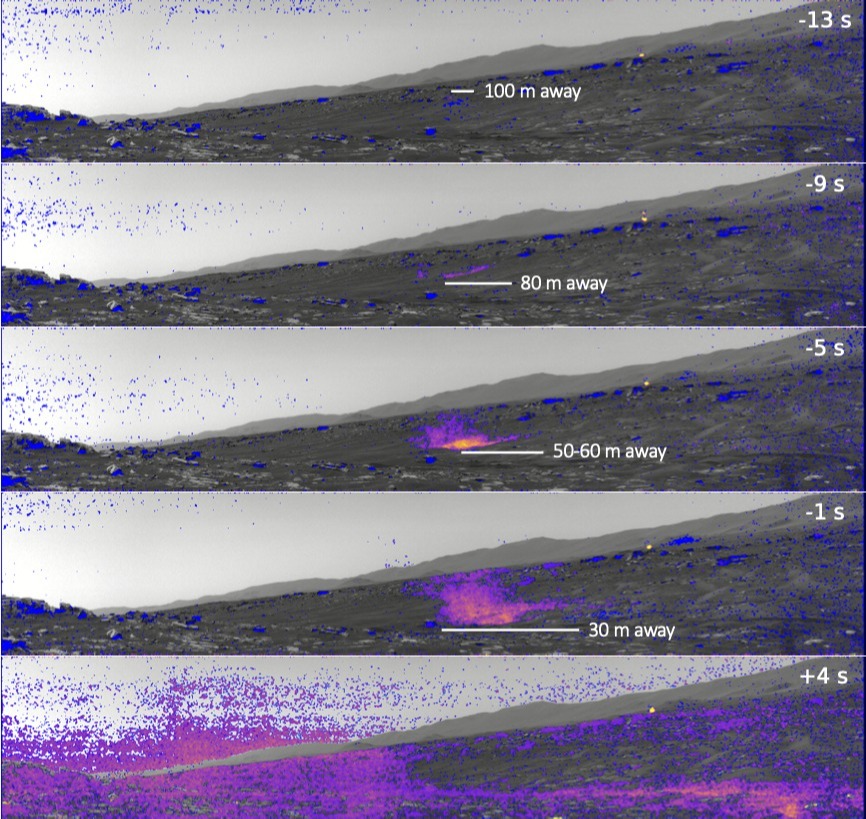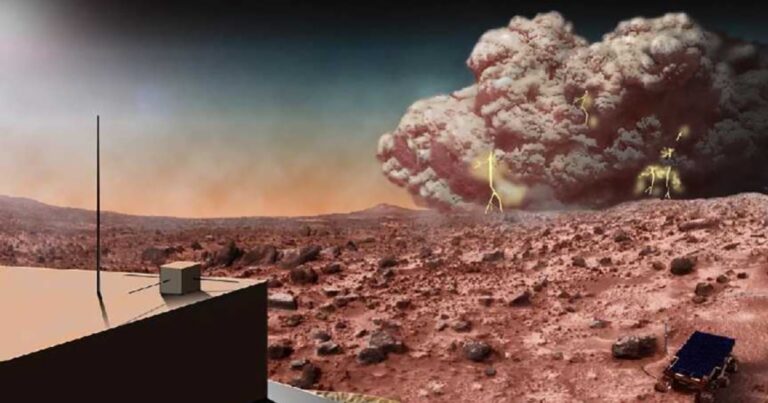Eerie Audio: Martian Dust Storm Engulfs Perseverance Rover
An unprecedented audio recording could reveal important details about extreme weather on Mars.
The first-ever audio recording of a dust devil on Mars’ surface reveals a towering dust storm that engulfed the Mars Perseverance rover in September 2021 and was 390.4 feet (119 meters) tall.
The recording, which was analyzed and published in the journal Nature Communications on Tuesday (Dec. 13), also reveals new information about how these short-lived phenomena move dust around on Mars.
“We can actually hear the noise of particles impacting the rover,” said Naomi Murdoch – a study lead author, a physicist at the National Higher French Institute of Aeronautics and Space (ISAE-SUPAERO) at the University of Toulouse in France. “The sound of these impacts allows us to count how many particles were in the vortex. It’s the first time such a measurement has ever been made on Mars”, Murdoch added.
The importance of dust
Dust is abundant on Mars’ surface and in the atmosphere. Its movement influences — and is influenced by — Mars’ weather and climate. Understanding dust movements is essential for modeling the Martian climate, as well as planning missions to the planet, Murdoch said. For example, dust has damaged Perseverance’s wind sensors, and the InSight Lander is shutting down operations due to dust accumulating on its solar panels, limiting the amount of power available for scientific monitoring.
When warm air near the ground rises and rotates, it picks up dust with it. Dust devils thrive in the Jezero crater, which the Perseverance rover is currently exploring. According to Murdoch and her colleagues, the Mars Environmental Dynamics Analyzer (MEDA) on the rover, which monitors environmental features such as temperature, dust, humidity, and wind, has detected at least 91 dust devils near the rover.
But on Sept. 27, 2021, something unprecedented happened: A dust devil went right over the rover. Not only did MEDA’s instruments collect data during the vortex impact, but Perseverance’s Navigation Cameras captured imagery and its SuperCam mic recorded the event’s sound.

Towering vortex
Combining these three sources of data, Murdoch and her team discovered that the storm was 82 feet (25 m) across, almost 10 times wider than the rover. The tornado was 390.4 feet tall, roughly the height of a 40-story building. The massive storm moved at 11.8 mph (19 km/h), with peak winds of 24.8 mph (40 km/h).
“However, on Mars, the atmosphere is much thinner than on Earth,” Murdoch said. “This means that, even if the wind speed is high, due to the small number of particles in the Martian atmosphere, the force of the wind is much smaller than on Earth.”
The majority of the dust in a typical dust devil is contained within the vortex’s walls. The dust, on the other hand, hit the rover in three distinct bursts — two walls and a cloud of dust in the center of the dust devil. The dust accumulation inside the dust devil was an unusual finding, Murdoch said.
“Today we still don’t understand exactly how dust is lifted from the surface of Mars, yet this is a crucial part of modeling both dust devils and dust storms,” she said. “We have demonstrated that with the microphone we can directly observe the process of dust lifting and characterize the conditions under which such lifting occurs.”
Source:ilovetheuniverse
Do not forget to share your opinion with us to provide you with the best posts !




0 Comments